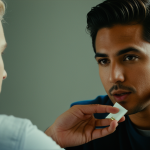Advanced Wound Assessment Techniques for Diabetic Foot Ulcers
Effective diabetic foot ulcer assessment is crucial for tailoring treatment and improving healing outcomes in patients. In the UK, podiatrists employ comprehensive wound assessment methodologies combining both visual and instrumental evaluations. These assessments include measuring ulcer size, depth, exudate levels, and tissue type, which provide a detailed wound profile to guide management.
Central to this process is the use of foot ulcer classification systems such as the University of Texas or Wagner scales. These frameworks categorise ulcers based on depth and presence of infection or ischemia, allowing clinicians to stratify risk and prioritise interventions. Utilising evidence-based podiatry UK protocols ensures consistency and enhances communication among multidisciplinary teams.
Integrating vascular and neurological assessments is a vital component within diabetic foot ulcer assessment. Ankle-brachial pressure index (ABPI) and Doppler studies evaluate blood supply, while monofilament testing identifies sensory neuropathy. Combining these tools helps detect underlying ischemia or neuropathic complications that can impede healing. This holistic approach aligns with evidence-based podiatry UK principles, fostering early identification of risk factors and informing timely treatment decisions.
Through structured evaluation procedures and standardised classification, UK podiatrists deliver precise and personalised care for diabetic foot ulcers. Such advanced assessment techniques underpin successful wound management and improve long-term patient outcomes.
In the same genre : Refurbished refraction units for optometry: quality and affordability
Best Practices in Debridement and Wound Management
Selecting the appropriate debridement methods is fundamental in managing diabetic foot ulcers effectively. UK podiatrists tailor debridement techniques to the ulcer’s specific characteristics—considering factors such as necrotic tissue presence, infection risk, and patient tolerance. Sharp debridement remains a primary approach for removing devitalised tissue quickly and precisely, promoting a cleaner wound bed. In contrast, enzymatic or autolytic methods may be preferred for patients with higher bleeding risk or more fragile skin, aligning with UK podiatry protocols that emphasise patient safety and efficacy.
Optimising the wound bed is critical for facilitating healing. Preparing an ulcer involves maintaining a moist environment balanced by appropriate exudate management, which modern dressings achieve effectively. Hydrocolloids, foams, and alginates are commonly used to support wound bed hydration and protect against bacterial contamination. Adjunctive therapies, including negative pressure wound therapy, are utilised selectively to enhance granulation tissue formation and reduce oedema, continuously guided by evidence-based podiatry UK standards.
Adhering to established UK guidelines, clinicians implement a structured wound management plan encompassing regular reassessment of the wound and adjustment of treatment modalities. This approach ensures timely recognition of complications such as infection or worsening necrosis, prompting escalation or modification of therapy. Consistency in following UK podiatry protocols fosters optimal outcomes, reducing ulcer chronicity and lowering amputation risk. Integrating these best practices in debridement and wound management positions podiatrists to deliver effective, patient-centred care for diabetic foot ulcers.
Effective Infection Prevention and Antimicrobial Strategies
Infection control in diabetic ulcers is a critical component of comprehensive care. Early recognition of infection in diabetic foot ulcers involves identifying signs such as increased erythema, warmth, swelling, pain, and purulent discharge. Infection can accelerate ulcer deterioration, increasing the risk of complications, so prompt intervention is essential.
The NICE diabetic foot guidelines recommend a systematic approach to infection diagnosis, including clinical examination supported by microbiological sampling when appropriate. This ensures that antimicrobial therapy, whether topical or systemic, targets the causative pathogens effectively, reducing unnecessary antibiotic exposure.
Antimicrobial dressings play a pivotal role in local infection control. These dressings incorporate agents such as silver, honey, or iodine, which possess broad-spectrum antimicrobial properties. Their use, guided by infection severity and wound characteristics, helps to reduce bioburden while maintaining an optimal wound environment conducive to healing. Importantly, these dressings align with infection control diabetic ulcers principles by minimizing systemic antibiotic reliance and supporting localised treatment.
Adhering to UK infection control protocols, clinicians employ evidence-based practices to balance controlling infection without promoting resistance. This includes regular wound reassessment to monitor response to antimicrobial therapy and adapting treatment plans accordingly. The integration of these strategies ensures effective management of infection within diabetic foot care, bolstering healing outcomes and patient safety.
Advanced Offloading Approaches in Ulcer Healing
Offloading remains a cornerstone in managing diabetic foot ulcers, directly influencing healing rates by reducing pressure on vulnerable tissues. UK podiatrists employ a variety of offloading devices designed to redistribute plantar pressures effectively. These range from removable options like therapeutic footwear and orthoses to non-removable modalities such as total contact casting (TCC), which is widely regarded as the gold standard for moderate to severe ulcers due to its superior pressure relief.
Total contact casting functions by immobilising the foot and evenly distributing weight along the entire foot and lower leg, significantly decreasing focal pressure at ulcer sites. This method enhances adherence, as patients are less likely to remove the cast compared to removable devices. UK clinical settings implement TCC with strict protocols to minimise complications such as skin breakdown or infection, ensuring patient safety during offloading therapy.
Pressure relief strategies must be monitored and adapted throughout the healing process. Regular assessment allows podiatrists to modify or upgrade offloading devices based on ulcer progress, patient mobility, and comfort. Combining offloading devices with patient education on pressure management contributes to sustained outcomes and reduces recurrence risk. Employing evidence-based podiatry UK guidelines, clinicians create personalised offloading plans that balance effective pressure redistribution with patient lifestyle considerations, optimising ulcer healing trajectories.
Advanced Wound Assessment Techniques for Diabetic Foot Ulcers
Advanced diabetic foot ulcer assessment in UK podiatry integrates meticulous methodologies to capture the ulcer’s multifaceted nature. This comprehensive approach involves measuring dimensions such as ulcer size and depth, evaluating exudate levels, and characterising tissue types, enabling clinicians to build a detailed wound profile essential for personalised care. These assessment processes are carefully calibrated to align with evidence-based podiatry UK standards, ensuring reliability and repeatability in clinical practice.
Standardised foot ulcer classification systems serve a pivotal role in guiding treatment pathways. Tools like the University of Texas and Wagner scales classify ulcers by depth, infection presence, and ischemic status. For instance, the Wagner scale grades wounds from superficial (Grade 1) to extensive gangrene (Grade 5), facilitating clear risk stratification. Applying these frameworks allows podiatrists to predict healing challenges and prioritise interventions effectively, embedding classification within daily assessment routines per UK protocols.
Integrating vascular and neurological components further refines the evaluation. Vascular assessment through measurements such as the ankle-brachial pressure index (ABPI) and Doppler ultrasonography identifies compromised perfusion, a key factor delaying healing. Neurological screening using monofilament testing detects sensory deficits linked to neuropathy, a major contributor to ulcer formation and recurrence. The synergy of these assessments ensures clinicians capture the wound environment comprehensively, enabling proactive management aligned with evidence-based podiatry UK.
In practice, combining meticulous ulcer measurement, classification scoring, and vascular-neurological evaluation forms the backbone of expert diabetic foot ulcer assessment. This systematic approach supports early identification of risk factors, facilitates tailored interventions, and enhances multidisciplinary communication, ultimately improving ulcer prognosis within UK podiatry frameworks.
Advanced Wound Assessment Techniques for Diabetic Foot Ulcers
Effective diabetic foot ulcer assessment combines thorough measurement and evaluation tools to produce a precise wound profile. UK podiatrists use comprehensive methodologies that include assessing ulcer size, depth, exudate characteristics, and tissue types. This detailed data collection supports nuanced clinical decisions aligned with evidence-based podiatry UK standards.
A fundamental component is applying standardised foot ulcer classification systems. The University of Texas and Wagner scales take into account ulcer depth, infection, and ischemia status. For example, Wagner’s grading from 1 to 5 enables practitioners to stratify ulcers by severity—superficial wounds at Grade 1 contrast with deep, gangrenous lesions at Grade 5. Using these systems helps direct treatment urgency and monitor progression within a consistent framework.
Crucially, the assessment integrates vascular and neurological examination techniques. Vascular assessment via the ankle-brachial pressure index (ABPI) and Doppler ultrasound identifies compromised blood flow, a major factor impeding healing. Neurological testing, particularly monofilament sensation testing, detects peripheral neuropathy, a common cause of ulcer formation. Combining these evaluations with ulcer classification enriches understanding of the wound environment.
Together, these components establish a robust diagnostic process within evidence-based podiatry UK. The synergy between wound measurement, classification, and vascular-neurological assessment ensures that clinicians deliver targeted, effective interventions based on precise ulcer characterization. This multi-dimensional assessment approach optimises healing strategies and supports improved patient outcomes.
Advanced Wound Assessment Techniques for Diabetic Foot Ulcers
Precise diabetic foot ulcer assessment is fundamental for targeted treatment and improved healing outcomes. UK podiatrists employ comprehensive wound assessment methodologies that incorporate detailed measurement of ulcer size, depth, and exudate characteristics, along with thorough evaluation of tissue types present. This structured approach ensures the wound profile is accurately captured, enabling nuanced clinical decisions consistent with evidence-based podiatry UK standards.
Central to clinical assessment is the use of standardised foot ulcer classification systems such as the University of Texas and Wagner scales. These frameworks categorise ulcers based on depth, infection presence, and ischemia, facilitating objective risk stratification. For example, the University of Texas system grades ulcers not only by wound depth but also by the existence of infection and peripheral arterial disease, helping clinicians to prioritise treatment plans and anticipate complications. Applying such classification tools consistently across UK practice supports uniform communication and outcome tracking within multidisciplinary teams.
In addition, effective assessment mandates integrating vascular and neurological evaluations to comprehensively profile the wound environment. Vascular assessment relies on tools like the ankle-brachial pressure index (ABPI) and Doppler ultrasonography to detect compromised blood flow, a critical factor that can delay healing or increase amputation risk. Neurological screening uses monofilament testing to identify peripheral neuropathy—loss of protective sensation that predisposes patients to ulcer development and progression. Together, these evaluations provide essential data influencing clinical decisions and intervention strategies.
In summary, the synergy of detailed wound measurement, application of foot ulcer classification systems, and integration of vascular-neurological assessments forms the backbone of expert diabetic foot ulcer assessment in UK podiatry. This multilayered methodology, grounded firmly in evidence-based podiatry UK, optimises ulcer characterisation and facilitates personalised, effective management plans.






